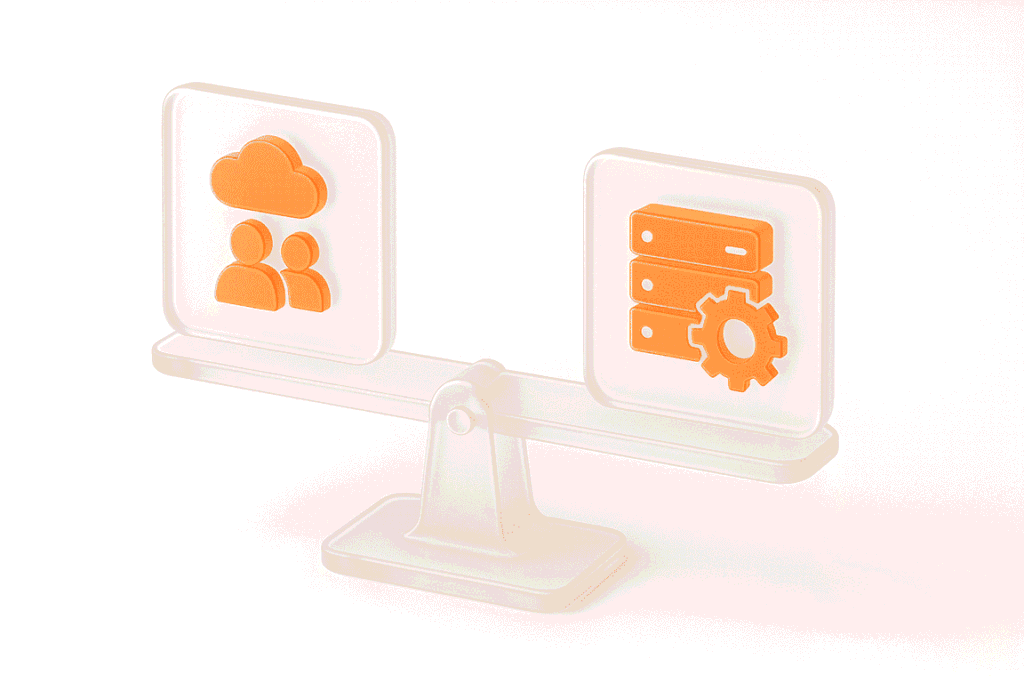An error budget defines the allowable downtime or errors for a system within a specific period, balancing innovation and reliability. In this article, you’ll learn what is error budget, how it’s calculated, and why it’s essential for maintaining system performance and user satisfaction.
Key Takeaways
Understanding Error Budgets: What Is Error Budget and How to Use It
An error budget represents the allowed unreliability that the system can afford without disappointing customers. It quantifies the acceptable levels of unreliability a service can have, providing a clear metric for teams to gauge their system’s performance. Essentially, error budgets help balance the need for reliability with the desire for rapid innovation, guiding teams on where to allocate their efforts.
Error budgets serve as a strategic tool for managing system reliability. Within limits, they enable developers to take risks and innovate. Once depleted, the focus shifts to enhancing system reliability. This dynamic approach maintains user trust and satisfaction, fostering a culture of continuous improvement through error budget calculations.
Introduction
In the fast-paced world of software development, balancing feature development with system reliability is a constant challenge. New features are exciting and can drive customer engagement, but they often come at the risk of system instability. This is where error budgets come into play.
Platforms like New Relic help monitor service levels, providing critical insights into system performance. These tools help teams set realistic performance expectations and track progress over time. Error budgets are essential in Site Reliability Engineering (SRE) for maintaining this balance.
Defining Error Budget
An error budget defines the acceptable level of unreliability for a service without affecting user satisfaction. This concept balances reliability and innovation, allowing teams to prioritize work effectively and maintain a reliable service.
Error budgets are calculated based on the service level objective (SLO), which defines the allowable level of failures for a system. By maintaining an error budget, teams can ensure that their services remain within acceptable reliability limits, preventing user dissatisfaction during outages or failures.
The Role of SLIs, SLOs, and SLAs in Error Budgets
SLIs, SLOs, and SLAs are fundamental tools in Site Reliability Engineering (SRE). These metrics work together to ensure service reliability and help manage error budgets effectively. SLIs measure the system’s reliability, availability, and usefulness, providing the data needed to make informed decisions. SLOs, on the other hand, set the performance targets that services must meet, while SLAs are formal agreements between service providers and customers.
Implementing SLOs and error budgets involves setting appropriate SLOs that reflect realistic performance expectations. Monitoring and measuring these metrics are crucial for ensuring that services meet their reliability goals. Error budgets ensure compliance with SLOs and SLAs, maintaining a balance between reliability and innovation.
Service Level Indicator (SLI)
Service Level Indicators (SLIs) are metrics that quantify the reliability of a service. They help assess system performance and health, providing data that informs operational decisions.
Setting up multiple alerts helps teams detect SLI- and SLO-related performance issues, allowing for prompt corrective actions.
Service Level Objective (SLO)
An SLO (Service Level Objective) is an agreed-upon objective for service reliability; it establishes the minimum reliability needed to satisfy customers. SLOs are crucial in site reliability engineering as they establish numerical targets for system availability, guiding development and operations teams in maintaining reliability.
SLOs are generally more stringent than SLAs, which usually outline broader service expectations. Monitoring tools offer data to set service level objectives and measure compliance against error budgets, ensuring services meet reliability targets and enhance customer satisfaction and trust.
Service Level Agreement (SLA)
An SLA is a formal agreement between a customer and a service provider. It defines the acceptable level of service reliability and availability that the provider must deliver. By setting clear expectations, SLAs help ensure that customers receive the level of service they are promised.
Calculating Error Budgets
Calculating error budgets involves establishing acceptable service reliability and determining allowable downtime. For example, an SLO of 99% availability translates to approximately 21.6 hours of allowable downtime per month, while 99.9% allows for about 43.2 minutes. These calculations help teams understand how much unreliability is permissible without affecting user satisfaction.
To effectively monitor error budgets, teams should use burn rate formulas to track how quickly error budgets are consumed. The formula for calculating Service Level Indicators (SLI) is: SLI = (Total Good Events / Total Events) x 100. This helps in maintaining a clear picture of service reliability and making informed decisions.
Importance of Error Budget Policies
Error budget policies are crucial for balancing system reliability with the speed of new feature delivery. A clear error budget policy helps organizations achieve innovation while maintaining service reliability and meeting customer satisfaction. By defining responses when the error budget is exceeded, these policies facilitate corrective actions and prevent further issues.
Implementing alerts when the error budget is nearly exhausted can help reduce the impact on customers. Alerting management about nearing an exhausted error budget helps in deciding the right action to take. This proactive approach ensures that organizations maintain high service reliability, ensuring customer satisfaction.
Using Error Budgets in Development and Operations
Error budgets serve as a guideline for development teams to balance between releasing new features and maintaining system reliability. By providing concrete metrics, error budgets help in assessing the balance between innovation and reliability. This ensures that development and operations teams can make informed trade-offs between introducing new features and maintaining system stability.
Organizations can use error budgets to allocate resources strategically, determining when to invest in new features based on budget health. Conducting post-incident reviews after exceeding error budgets helps identify root causes and improve future reliability. This collaborative approach ensures that teams are aligned toward common reliability goals.
Allocating Resources Based on Error Budgets
Monitoring error budget consumption helps developers make informed decisions on resource allocation. By utilizing threshold-based and time-based budgeting approaches, teams can optimize resource allocation based on error budgets.
This balance ensures that innovation is not compromised while maintaining system stability.
Decision Making with Error Budgets
Error budgets help in balancing innovation and reliability by defining acceptable error levels, guiding resource prioritization. Exceeding a significant portion of the error budget prompts teams to reconsider their pace of feature development and prioritize system stability.
This ensures that new features do not negatively impact user satisfaction.
Managing Maintenance Windows and Their Impact on Error Budgets
Scheduled maintenance windows are pre-determined times for performing necessary updates that may disrupt service. Planning these windows is essential to minimize customer impact while ensuring necessary updates are made. Maintaining a balance during maintenance windows is crucial to preserving error budgets and service reliability.
Effective communication of maintenance windows to users is crucial to manage expectations and minimize dissatisfaction. Scheduling maintenance during low user traffic periods helps reduce negative effects on users and preserve error budgets.
Planning Maintenance Windows
The maintenance window should be strategically planned to coincide with periods of low user activity to minimize customer impact. Traffic projections based on historical data can guide the scheduling of maintenance to minimize disruptions.
Effective communication with users and stakeholders about maintenance activities is also crucial for maintaining user trust.
Maintenance During Business Hours
Including maintenance downtime in the error budget during business hours is a strategic business consideration. By regularly reviewing and automating operations tasks, teams can minimize downtime and ensure service reliability. This approach helps treat maintenance as an integral part of service management, ensuring that user expectations are met.
Strategies for Spending and Preserving Error Budgets
Teams should identify low-risk opportunities where spending error budgets on innovation can lead to significant improvements. Prioritizing features based on error budget analysis aids in making informed decisions while balancing innovation and stability. This ensures that teams can enhance overall system reliability and user experience.
When the error budget is depleted, organizations should prioritize fixing critical reliability issues before introducing new features. A response plan for error budget depletion helps maintain service reliability during critical times.
Proactive monitoring and analysis of service performance enable teams to preserve their error budgets effectively.
When to Spend Your Error Budget
Developers can spend their error budgets in any way they see fit, promoting flexibility in decision-making. Tracking error budget usage is essential to avoid overspending and ensure sustainable service reliability.
This approach enables teams to release new features without negatively impacting user satisfaction.
Actions When Error Budget is Depleted
If the error budget is exhausted, development teams may need to pause new feature releases to focus on restoring reliability. Implementing alerts and policies helps minimize further customer impact as the error budget approaches depletion.
When a team exhausts its error budget, policies may necessitate freezing new releases or performing a system rollback to restore stability. This strategy ensures service reliability remains intact.
Benefits of Implementing Error Budgets
Error budgets serve as a strategic tool to balance the need for innovation with the demand for system reliability. By allowing teams to take calculated risks, error budgets provide a defined amount of acceptable downtime, enabling innovation without harming customer satisfaction. This balance is crucial for maintaining user trust while fostering a culture of continuous improvement and accountability.
Moreover, error budgets manage risks, prioritize work, and improve team collaboration. They align development and operations teams towards common reliability goals, promoting a culture of accountability. This collaborative approach ensures that both teams work towards enhancing system reliability and user satisfaction.
Common Challenges and Best Practices
Implementing error budgets comes with its own set of challenges, such as setting realistic SLOs, educating teams, and integrating error budgets into workflows. Overcoming these challenges requires establishing enforcement mechanisms that prioritize reliability tasks when the budget is at risk. This helps in maintaining a balance between reliability and innovation while meeting user expectations and business goals.
Error budgets can also help reduce alert fatigue by focusing notifications on significant customer-impacting issues. This framework aids in assessing the probability and impact of reliability issues, which is integral to effective risk management.
Adopting best practices ensures that organizations can achieve continuous improvement while maintaining high service reliability and implementing reliability improvements.
How to Track and Monitor Error Budgets
Automated tracking of error budgets provides real-time insights, enabling quicker responses to reliability issues. Modern technologies like virtualization can help reduce the frequency and duration of maintenance windows, while monitoring key system metrics like cpu time can help teams better understand resource consumption patterns, further preserving error budgets. Monitoring error budgets is crucial for maintaining service reliability and ensuring customer satisfaction.
Effective tracking of error budgets enhances service reliability and customer satisfaction. Monitoring tools and real-time alerts help teams manage their error budgets, ensuring timely actions to prevent disruptions.
Summary
Error budgets are a vital tool in balancing innovation and system reliability. They provide a clear framework for managing acceptable levels of unreliability, enabling teams to innovate without compromising user satisfaction. By understanding and implementing error budgets, organizations can maintain high service reliability while still pushing the boundaries of what their teams can achieve.
In conclusion, error budgets offer a strategic approach to managing reliability and innovation. By adopting clear error budget policies, tracking and monitoring performance, and making informed decisions, teams can ensure that they deliver reliable services while continuously improving and innovating. Embrace error budgeting to foster a culture of reliability and innovation within your organization.
Frequently Asked Questions
What is an error budget?
An error budget quantifies the acceptable levels of unreliability for a service, ensuring it doesn’t lead to user dissatisfaction. This concept allows teams to balance risk and reliability effectively.
How do error budgets help in balancing reliability and innovation?
Error budgets help teams determine acceptable levels of unreliability, striking a balance between innovation and maintaining system reliability. By quantifying this trade-off, organizations can foster both creativity and dependability in their processes.
What are SLIs, SLOs, and SLAs?
SLIs measure system performance, while SLOs establish performance targets that guide service expectations. SLAs are formal agreements that outline the acceptable service levels and responsibilities between service providers and customers.
How are error budgets calculated?
Error budgets are calculated by establishing the service level objective (SLO), which defines the permissible level of failures within a system. This allows teams to assess and manage the reliability expectations effectively.
What should teams do when the error budget is depleted?
When the error budget is depleted, teams should halt new feature releases and concentrate on enhancing system reliability. Prioritizing stability will help restore confidence in the system’s performance.






